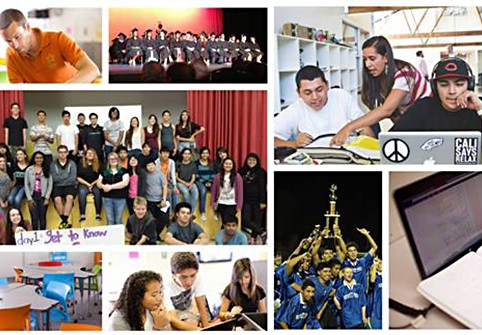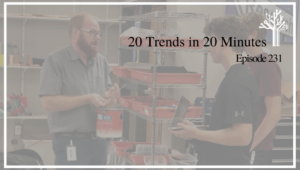Next Generation K-12: 10 Implications for HigherEd

There are a growing number of next generation models in K-12 as a result of new thinking about learning design and deeper understandings of college and career readiness, enabled by cheap devices, better tools, and foundation support. They personalize learning in blended and competency-based environments. These models revolve around students and learning, rather than teachers and direct instruction as the primary pedagogy.
We’ve chronicled the development of next-gen schools (here and here) and see hundreds of districts and networks adopting next-gen strategies. We’re optimistic that broader adoption of these strategies will produce better student outcomes. Following are 10 examples of next-gen learning in K-12.
10 examples of next-gen K-12
- Summit Public Schools: well articulated goals, innovative platform blends playlists and projects.
- Brooklyn Lab built Cortex, their own personalized learning platform.
- Kettle Moraine, a Milwaukee area district, created new small themed flex academies to expand options and manage change.
- DSST is the best high poverty STEM network and a values-first organization, it will soon account for 25% of graduates in Denver–and more will be going to college.
- IDEA Public Schools operates 44 schools in low-income south Texas communities. The blended elementary schools feed AP/IB high schools which send all of their graduates to college.
- Quest Early College, Spring Texas, where 80% of grads leave with an AA degree from Lone Star College; great service learning program.
- Metro Early College High School in Columbus features the Bridge intersession team taught by OSU and Metro faculty demonstrates readiness for college classes.
- Career Path High on campus of Davis Applied Technology College is a CTE early college.
- RAMTEC, Marion, Ohio, where students learn and teach robotics.
- VLACS offers full and part-time online learning to New Hampshire students which are part of a statewide, policy-fueled push for proficiency-based graduation and college admissions.
These examples are not single course innovations, they are engineered solutions. The first half are districts or networks; the other half are schoolwide models. There are hundreds of examples and they have big implications for HigherEd.
We see 10 implications for HigherEd; some directly as a result of next-gen models, some resulting from next-gen policies, some from EdTech and consumer variables impacting both K-12 and HigherEd.
Preparation variables
- Better prep: Almost every state has adopted higher standards in reading, writing, and math that will, over time, result in better college preparation.
- Better mindset: Following the lead of next-gen models, a growing number of K-12 schools are promoting a growth mindset and high agency learning. Stronger executive functions should result in improved persistence and self management.
- More credit: The expansion of dual enrollment and other college credit options are increasing the percentage of students entering college with a significant amount of credit.
Consumer variables impacting K-12 and HigherEd
- Better employability: Led by next-gen models and scholars like David Conley, there is a stronger K-12 focus on success skills. Persistent youth unemployment following the Great Recession has made more young people aware of the need for work experiences and job skills.
- Better LX: The widespread use of personalized and blended learning is creating a generation of demanding consumers that expect high engagement learner experience (LX) with some ability to customize their own pathway. Many learners will be seeking more active and applied learning in more authentic settings.
- More CBE: There is a slow but steady increase in the percentage of K-12 students able to learn at their own pace and progress based on demonstrated mastery. Competency-based education (CBE) is working its way in from the edges including credit for prior/outside learning, individual pacing, rolling enrollment.
- More options: In addition to school choice, high school students in most states have access to online learning options and, increasingly, to authentic learning experiences outside of school (externships); the combination is creating a more demanding consumer and setting the stage for a unbundled HigherEd experience.
Infrastructure variables impacting K-12 and HigherEd
- Blended staffing: Next-gen models incorporate differentiated and distributed staffing. New models leverage the talent of great educators and support educators in teams, with most working in facilitating/coaching roles. Speech therapists, language teachers, and mentors are all available at a distance address problems and expand options.
- Mobile: with nearly ubiquitous mobile penetration, learning platforms and tools must increasingly be optimized for mobile use (e.g., DreamDegree).
- Integrated IT: The old challenge of “technology integration” is being replaced by an integrated design opportunity, next-gen learner experience supported by an integrated IT stack (LX+IT, e.g., College for America). Behind all of it is machine learning: adaptive learning, conversion optimization, and operational efficiency. Some HigherEd models will take advantage of this opportunity, but most likely will not.
In short, HigherEd institutions will need to enable a bundled multi-provider experience (or risk becoming part-time providers), focus on employability skills and experiences, and take learner experience much more seriously.
For more, check out:
- 4 Essential Competency-Based Education Commitments for HigherEd Leaders
- Anywhere Anytime Learning is Changing: Implications for Parents, HigherEd and K-12
- DreamDegree Offers Mobile HigherEd Platform, Affordable GenEd
This blog was co-authored with Andy Calkins Deputy Director of Next Generation Learning Challenges, an initiative of EDUCAUSE. Follow Andy on Twitter at @andrewcalkins.
Stay in-the-know with all things EdTech and innovations in learning by signing up to receive the weekly Smart Update.








0 Comments
Leave a Comment
Your email address will not be published. All fields are required.